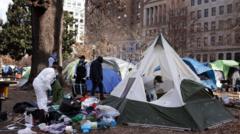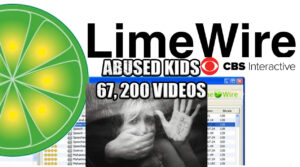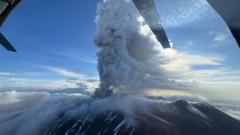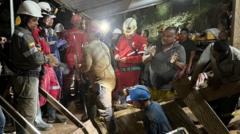**The ruling raises questions about landowner liability and safety responsibility regarding natural tourist attractions.**
**Unraveling the White Island Eruption Case: High Court Dismisses Conviction of Volcano Owners**

**Unraveling the White Island Eruption Case: High Court Dismisses Conviction of Volcano Owners**
**The New Zealand High Court has overturned the conviction of the owners of Whakaari/White Island, linked to a 2019 eruption that resulted in 22 fatalities.**
The High Court of New Zealand has recently nullified the conviction of Whakaari Management Limited (WML), the company behind the ownership of Whakaari/White Island, which erupted in December 2019, claiming the lives of 22 individuals. Initially convicted in 2023 for lapses in visitor safety, WML received a fine of over NZ$1 million (approximately US$560,000) and was ordered to pay NZ$4.8 million in reparations to the victims' families.
However, the High Court's latest decision, delivered on Friday, determined that WML, while owning the land, was not accountable for ensuring the safety of daily visitors. This ruling comes in the wake of the tragic eruption, which struck during a period of increased volcanic activity on the island, a well-known tourist destination. Among those affected were numerous tourists, with a significant number hailing from Australia and the U.S. Many survivors sustained severe injuries, including extensive burns.
Justice Simon Moore noted in his ruling that WML did indeed facilitate tours to the volcano but had adequately relied on specialized tour operators and safety organizations for risk assessments. He stressed that despite the legal outcome, the immense sorrow experienced by the victims' families was acknowledged. “The scale and nature of human loss in this case is deeply moving and tragic,” he remarked.
The case against WML was pivotal, being the most significant safety prosecution undertaken by New Zealand's regulatory body, Worksafe NZ, which is now contemplating whether to appeal the High Court's ruling. The Buttle family's proprietorship of Whakaari dates back to the 1930s, raising critical discussions about the responsibilities of landowners granting recreational access to natural sites.
The outcome of this ongoing saga serves as a reminder of the complexities surrounding safety obligations in the tourism sector, particularly in locations where natural hazards are inherent. As the legal proceedings progress, the conversation around safety, regulation, and accountability remains at the forefront of New Zealand’s broader dialogue on tourism and environmental management.




















